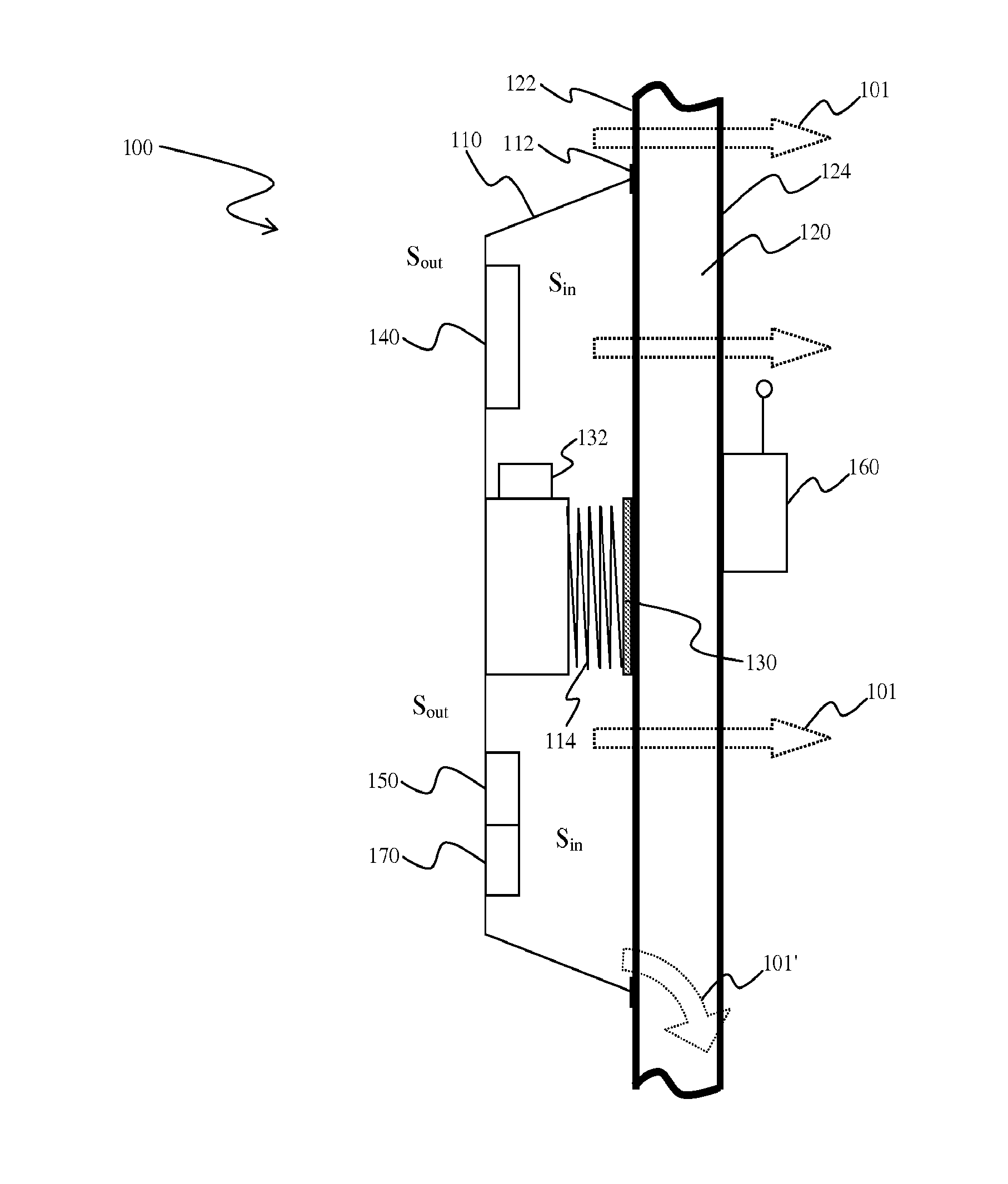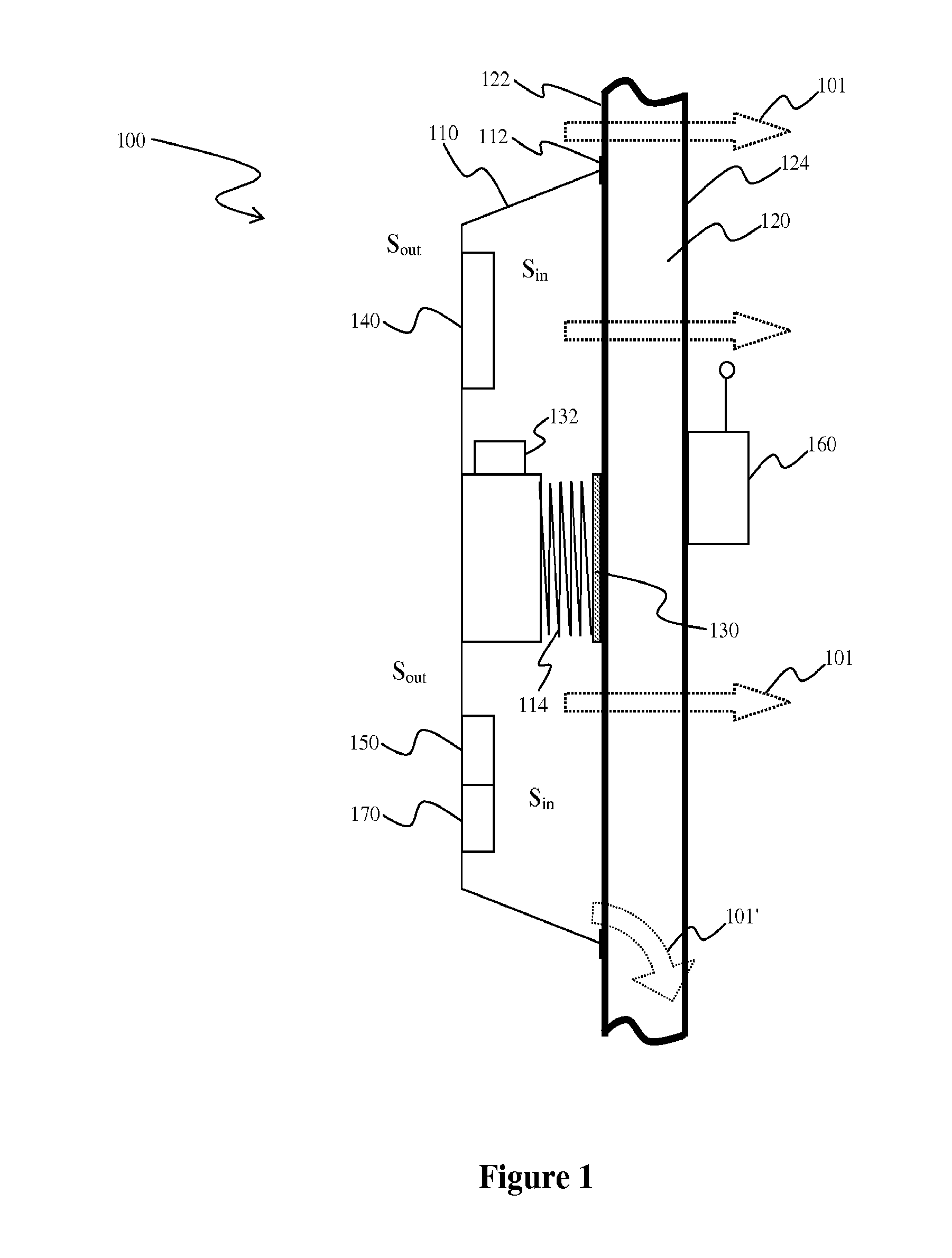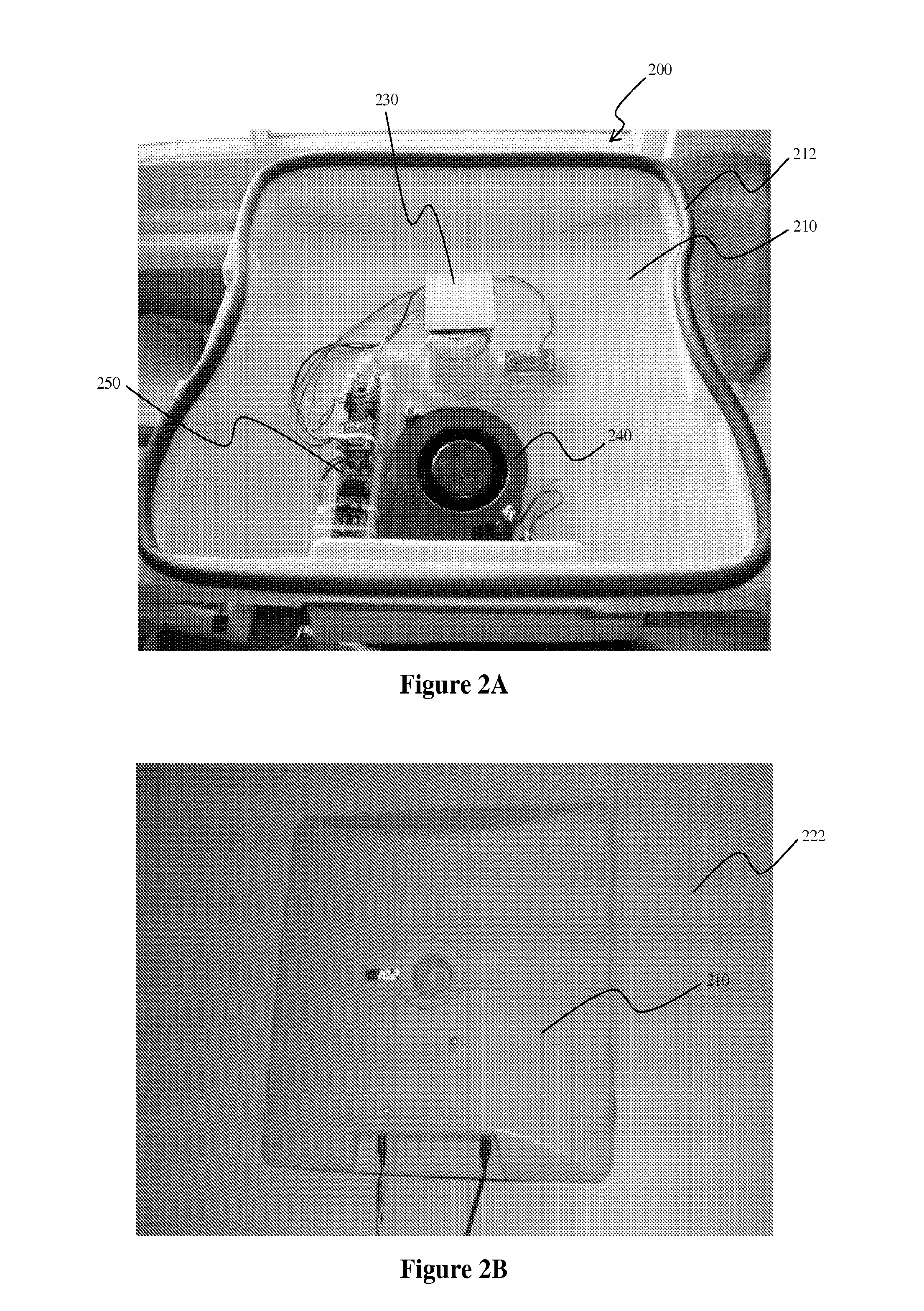Thermal Resistance Measuring Device
- Summary
- Abstract
- Description
- Claims
- Application Information
AI Technical Summary
Benefits of technology
Problems solved by technology
Method used
Image
Examples
Embodiment Construction
[0019]The inventors have discovered that heat flux across a structure can be measured in situ in a simple and accurate manner using a heat flux transducer that is placed in a housing that is configured to avoid the drawbacks normally associated with a hot box. Most advantageously, the measurement can be performed in real-time over any desired period of time at variable conditions at one side (or both sides) of the structure. Viewed from a different perspective, it should be appreciated that contemplated devices provide significant improvement over many aspects of heretofore known devices, particularly with respect to in situ use, portability, and accuracy, which is at least in part facilitated by taking advantage of the Seebeck effect of Peltier elements where such elements are used “in reverse”.
[0020]In particularly preferred methods and devices, the heat flux sensor is a thermoelectric sensor (Peltier element), which provides various advantages that are normally not achieved using...
PUM
 Login to View More
Login to View More Abstract
Description
Claims
Application Information
 Login to View More
Login to View More - R&D
- Intellectual Property
- Life Sciences
- Materials
- Tech Scout
- Unparalleled Data Quality
- Higher Quality Content
- 60% Fewer Hallucinations
Browse by: Latest US Patents, China's latest patents, Technical Efficacy Thesaurus, Application Domain, Technology Topic, Popular Technical Reports.
© 2025 PatSnap. All rights reserved.Legal|Privacy policy|Modern Slavery Act Transparency Statement|Sitemap|About US| Contact US: help@patsnap.com



